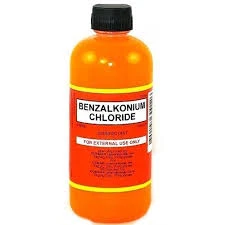non ionic polyacrylamide
Understanding Non-Ionic Polyacrylamide Properties, Applications, and Benefits
Non-ionic polyacrylamide (PAM) is a synthetic polymer that has gained significant attention across various industries due to its versatile properties and applications. As a water-soluble polymer, non-ionic polyacrylamide stands out for its ability to improve the physical and chemical properties of water, making it indispensable in fields ranging from agriculture to wastewater treatment. In this article, we will explore its properties, applications, and benefits in detail.
What is Non-Ionic Polyacrylamide?
Non-ionic polyacrylamide is a type of polyacrylamide characterized by the absence of charged ions in its structure. Unlike anionic and cationic polyacrylamides, which have specific charges that influence their behavior in solution, non-ionic PAM does not exhibit such charge-dependent interactions. This lack of ionic charge confers certain advantages, such as reduced sensitivity to variations in pH and ionic strength of the solution.
Properties of Non-Ionic Polyacrylamide
1. Water Solubility Non-ionic polyacrylamide is highly soluble in water, which enables it to disperse easily and form stable solutions. This solubility is crucial for its efficiency in various applications, particularly in enhancing the stability of suspensions.
2. Viscosity Modification The presence of non-ionic polyacrylamide in a solution can significantly increase viscosity. This property is particularly beneficial in applications where thicker solutions are needed, such as in drilling fluids and enhanced oil recovery.
3. Biodegradability Non-ionic PAM is known for its environmental friendliness, as it can be degraded by microorganisms in the presence of moisture. This makes it a favorable choice in eco-sensitive applications, minimizing the environmental burden.
4. Thermal Stability Non-ionic polyacrylamide exhibits good thermal stability, allowing it to maintain its properties under elevated temperatures, which is essential for certain industrial processes.
Applications of Non-Ionic Polyacrylamide
1. Agriculture One of the most significant uses of non-ionic polyacrylamide is in agriculture, where it enhances soil structure and water retention. By improving soil aggregation, it reduces erosion and promotes better water infiltration, making it a valuable tool for farmers in arid regions.
non ionic polyacrylamide

2. Wastewater Treatment In the field of wastewater management, non-ionic PAM acts as a flocculant, helping to aggregate suspended particles for easier removal. This leads to improved water clarity and quality, which is essential for meeting environmental regulations.
3. Oil Recovery The petroleum industry employs non-ionic polyacrylamide as a viscosifying agent in various processes, including enhanced oil recovery (EOR). Its ability to increase the viscosity of water allows for more effective displacement of crude oil from reservoirs.
4. Construction In construction applications, non-ionic PAM is used as a soil stabilizer, particularly in the creation of embankments and road bases. It aids in reducing dust emissions and enhancing the overall stability of the materials used.
Benefits of Using Non-Ionic Polyacrylamide
The benefits of incorporating non-ionic polyacrylamide into various processes are manifold
1. Cost-Effectiveness By improving the efficiency of processes such as water treatment and oil recovery, non-ionic PAM can lead to significant cost savings in the long run.
2. Environmental Safety Its biodegradability and non-toxic nature make it a safer alternative compared to other chemical additives, aligning with sustainability goals.
3. Enhanced Performance The ability of non-ionic polyacrylamide to modify viscosity and improve soil and water properties leads to enhanced performance in agricultural and industrial applications.
4. Versatility Its diverse range of applications means that non-ionic polyacrylamide can serve multiple purposes across different sectors, making it a valuable asset in both industrial and agricultural practices.
Conclusion
Non-ionic polyacrylamide stands as a versatile and valuable polymer in various applications, offering numerous benefits that improve efficiency and sustainability. Its unique properties allow it to play crucial roles in agriculture, wastewater treatment, oil recovery, and more. As industries increasingly prioritize eco-friendly solutions, the role of non-ionic polyacrylamide is poised to grow, making it a polymer worth exploring for future innovations.
-
Water Treatment with Flocculant Water TreatmentNewsJun.12,2025
-
Polymaleic AnhydrideNewsJun.12,2025
-
Polyaspartic AcidNewsJun.12,2025
-
Enhance Industrial Processes with IsothiazolinonesNewsJun.12,2025
-
Enhance Industrial Processes with PBTCA SolutionsNewsJun.12,2025
-
Dodecyldimethylbenzylammonium Chloride SolutionsNewsJun.12,2025





